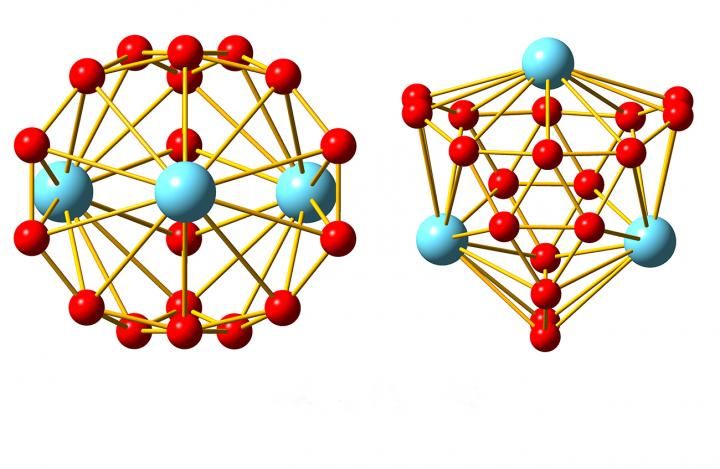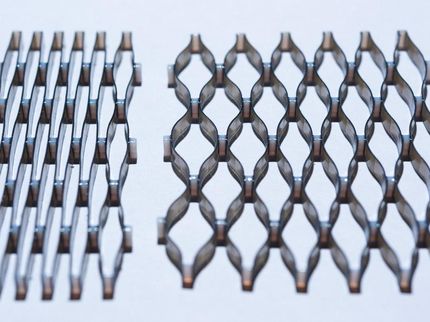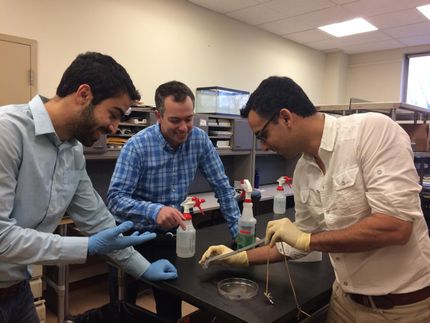Do not throw away - just wait
3D printed tires and shoes that self-repair
Instead of throwing away your broken boots or cracked toys, why not let them fix themselves? Researchers at the University of Southern California Viterbi School of Engineering have developed 3D-printed rubber materials that can do just that.

This is a severed 3D-printed shoe pad repairing itself
An Xin and Kunhao Yu
Assistant Professor Qiming Wang works in the world of 3D printed materials, creating new functions for a variety of purposes, from flexible electronics to sound control. Now, working with Viterbi students Kunhao Yu, An Xin, and Haixu Du, and University of Connecticut Assistant Professor Ying Li, they have made a new material that can be manufactured quickly and is able to repair itself if it becomes fractured or punctured. This material could be game-changing for industries like shoes, tires, soft robotics, and even electronics, decreasing manufacturing time while increasing product durability and longevity.
The material is manufactured using a 3D printing method that uses photopolymerization. This process uses light to solidify a liquid resin in a desired shape or geometry. To make it self-healable, they had to dive a little deeper into the chemistry behind the material.
Photopolymerization is achieved through a reaction with a certain chemical group called thiols. By adding an oxidizer to the equation, thiols transform into another group called disulfides. It is the disulfide group that is able to reform when broken, leading to the self-healing ability. Finding the right ratio between these two groups was the key to unlocking the materials' unique properties.
"When we gradually increase the oxidant, the self-healing behavior becomes stronger, but the photopolymerization behavior becomes weaker," explained Wang. "There is competition between these two behaviors. And eventually we found the ratio that can enable both high self-healing and relatively rapid photopolymerization."
In just 5 seconds, they can print a 17.5-millimeter square, completing whole objects in around 20 minutes that can repair themselves in just a few hours. In their study they demonstrate their material's ability on a range of products, including a shoe pad, a soft robot, a multiphase composite, and an electronic sensor.
After being cut in half, in just two hours at 60 degrees Celsius (four for the electronics due to the carbon used to transmit electricity) they healed completely, retaining their strength and function. The repair time can be decreased just by raising the temperature.
"We actually show that under different temperatures - from 40 degrees Celsius to 60 degrees Celsius - the material can heal to almost 100 percent," said Yu, who was first-author of the study and is studying structural engineering. "By changing the temperature, we can manipulate the healing speed, even under room temperature the material can still self-heal"
After conquering 3D-printable soft materials, they are now working to develop different self-healable materials along a range of stiffnesses, from the current soft rubber, to rigid hard-plastics. These could be used for vehicle parts, composite materials, and even body armor.
Original publication
Other news from the department science

Get the chemical industry in your inbox
By submitting this form you agree that LUMITOS AG will send you the newsletter(s) selected above by email. Your data will not be passed on to third parties. Your data will be stored and processed in accordance with our data protection regulations. LUMITOS may contact you by email for the purpose of advertising or market and opinion surveys. You can revoke your consent at any time without giving reasons to LUMITOS AG, Ernst-Augustin-Str. 2, 12489 Berlin, Germany or by e-mail at revoke@lumitos.com with effect for the future. In addition, each email contains a link to unsubscribe from the corresponding newsletter.
Most read news
More news from our other portals
Last viewed contents
Phosphoinositide_3-kinase

New boron-lanthanide nanostructure discovered - A newly discovered nanocluster has a geometry that “has not been observed in chemistry heretofore,” the researchers say
BASF to sell its global paper hydrous kaolin business - BASF to focus on kaolin for industrial applications




























































